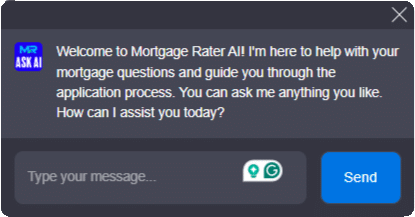Determining how much house I can afford isn’t just a numbers game; it’s about realizing the dream of homeownership without stretching your finances too thin. When you’re navigating the complexities of buying a home, a combination of financial factors must all align perfectly. It’s more than crunching your salary; it means understanding your entire financial picture. So, let’s dive into what goes into figuring out your purchasing power and help you uncover the path to your ideal home.
7 Key Factors to Determine How Much House You Can Afford
1. Your Income Level
Let’s start with the basics—your income. Your monthly earnings form the foundation of your home-buying budget. The golden rule here is that you can usually afford a home priced between 2.5 to 3 times your gross annual income. For instance, if you earn $100,000 a year, you might find yourself in the ballpark of homes ranging from $250,000 to $300,000. Remember, this is just a guideline; your comfort level and other expenses will truly dictate how much you can afford.
2. Debt-to-Income (DTI) Ratio
Lenders are a bit like detectives when it comes to your finances. They want to know your Debt-to-Income (DTI) ratio, which should ideally stay below 36%. This figure compares your monthly debts to your income, offering a glimpse into your financial health. For example, if you pull in $6,000 a month but owe $1,800 in monthly debts, you are sitting pretty at a 30% DTI. Understanding this could help you avoid overextending yourself and ensure you can handle the added weight of a new mortgage.
3. Credit Score
Your credit score is the ticket that unlocks the door to different mortgage options. A score of 740 or higher often gives you access to the best interest rates. On the flip side, a score of 620 or lower may mean you encounter fewer options and higher rates. A lower interest rate can save you thousands over the life of your loan, greatly impacting how much house you can afford.
4. Down Payment Size
Let’s chat about the down payment. The amount you can put down at the start has a massive influence on your future mortgage payments. Aiming for 20% is typically recommended; it helps you dodge Private Mortgage Insurance (PMI). But did you know that some loans allow down payments as low as 3%? So, if you’re eyeing a $300,000 home and only put down 3%, that’s just $9,000! Compare that to a 20% down payment, which would set you back $60,000. The difference is quite striking and can help you see the big picture of your budget.
5. Property Taxes and Insurance
These costs can vary, depending on where you’re looking to plant roots. It’s important to include property taxes and insurance in your total monthly expenses. For instance, in a market like Austin, Texas—where property taxes can soar to 2.2%—a $300,000 home could tack on an annual tax burden of around $6,600. That’s roughly $550 added to your monthly budget! So make sure you account for these figures when calculating how much home you can realistically afford.
6. Additional Monthly Expenses
Now, we can’t forget the additional monthly expenses. After you factor in the mortgage, property taxes, and insurance, there are still maintenance and utility costs to cover. Generally, set aside about 1% of the home’s value annually for maintenance. For our $300,000 home example, that’s approximately $3,000 a year, or $250 per month. This way, you can better prepare for the reality of owning a home and snapshot how much home you can truly afford.
7. Market Trends and Interest Rates
Lastly, keep an eye on the economic landscape. Interest rates play a vital role in your purchasing power, fluctuating between 6% and 7.5% in 2024. A slight change in rates can shift your monthly payments substantially. Using a mortgage calculator can help you visualize how these changes will impact your budget and how much house you can afford over time.
Analyzing Your Budget: Real-Life Examples
Let’s consider two real-life scenarios that illustrate our earlier points.
| Factor | Description | Typical Values |
| Income | Your gross monthly income (before taxes). | Varies by location and employment |
| Current Debt | Total monthly debt payments (e.g., loans, credit cards). | 36% of monthly gross income is a general guideline |
| Down Payment | The initial payment made when you buy the house. | 3% – 20% of house price |
| Interest Rate | The rate lenders charge for borrowing money to buy a home. | 3% – 7% (varies based on market conditions) |
| Term Length | The duration over which the loan is paid back, typically in years. | 15, 20, or 30 years |
| Property Taxes | Taxes imposed by the local government on home ownership. | 1% – 2% of property value annually |
| Homeowners Insurance | Insurance covering home damages and liability for accidents. | $500 – $1,500 annually |
| Mortgage Insurance | Additional insurance if your down payment is less than 20%. | 0.3% – 1.5% of the loan amount annually |
| Monthly Mortgage Payment | Sum of principal and interest, property taxes, homeowners insurance, and possibly mortgage insurance. | Generally, 25% – 30% of gross monthly income |
| Affordability Limit | General guideline for house price you can afford based on income and debt. | Home Price = Annual Income x 2.5 – 3 |
Finding Your Perfect Home
Navigating the home-buying process is about more than crunching numbers. It’s aligning your dreams with your financial reality. When you grasp how much house you can afford, you’re not just making a smart financial decision; you’re setting yourself up for sustainable homeownership.
Understanding these seven crucial factors helps potential buyers approach the housing market with clarity. By forming a realistic budget, aspiring homeowners can transition from the dream of owning a casa to making it a reality. Remember, the journey to your perfect home is entirely achievable when you’re armed with the right facts and strategies.
For more insights on managing your home-buying journey, don’t hesitate to explore our resources, including What kind Of house can I afford, How expensive a house can I afford, and What can I afford mortgage. Your perfect home is waiting for you; understanding these financial components is your key to unlocking that door.
How Much House Can I Afford: Fun Trivia and Interesting Facts
Your Home-Buying Journey
Figuring out how much house can I afford can feel like traversing a maze. But here’s a fun fact: the average homebuyer spends about 7-10 months planning their purchase! Whether your goal is to snag that charming bungalow style house or a vibrant loft, understanding your budget is crucial. This leads us to an interesting tidbit: like the catchy plot twists in JoJo Part 6, navigating financial decisions can get surprisingly intricate!
Speaking of preparedness, did you know that using a larger down payment can significantly lower your monthly mortgage? You might wonder, how much house can I afford with $10,000 down? Well, that’s a solid starting point to potentially unlock an inviting home without straining your wallet too much. Also, as you dive deeper into your finances, don’t overlook the importance of understanding terms like define modification. This can also make a big difference in your overall loan structure.
Fun Facts to Inspire You
As you ponder how much house can I afford, take a moment to think about the lifestyle you want. For instance, Scandinavian homes often incorporate serene features like a scandinavian cold pool, promoting relaxation and wellness. Imagine soaking in tranquility after a long day—quite the dream, right? Plus, these homes inspire innovative, minimalist designs that can spark your creative vision as you consider your future digs.
Now, shifting gears, ever wondered How Does buying a house work exactly? Most folks dive into negotiations feeling a tad unprepared, but that’s common! Remember, even seasoned buyers can trip over hefty closing costs or unexpected fees. Keeping track of your budget and options will help you tackle these surprises head-on. And isn’t it intriguing how the fun facts around housing can ignite your excitement? Owning a home isn’t just about bricks and mortar; it’s about crafting your personal sanctuary amidst a whirlwind of choices!



